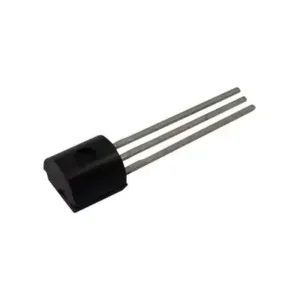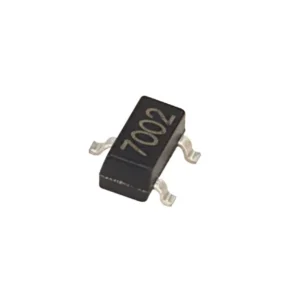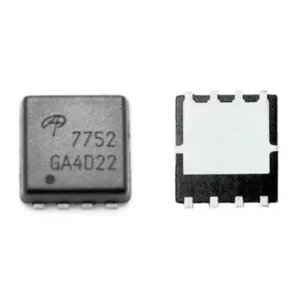A MOSFET (Metal-Oxide-Semiconductor Field-Effect Transistor) is a critical component in modern electronics, serving a variety of functions in different applications.
Whether you are dealing with power regulation, switching, or amplification, understanding what a MOSFET does can greatly enhance your ability to design and troubleshoot electronic circuits.
What Does a MOSFET Do?
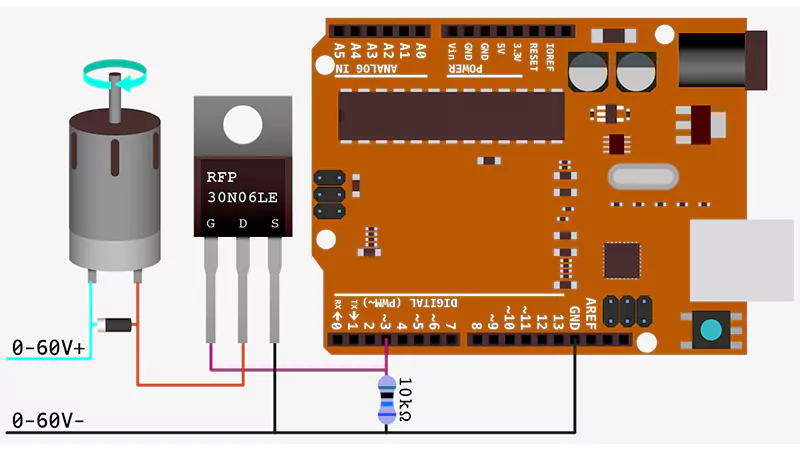
At its core, a MOSFET acts as a switch or amplifier in electronic circuits. It controls the flow of current between two terminals (the source and drain) by applying a voltage to a third terminal (the gate). This ability to control large amounts of current with a small input voltage makes MOSFETs highly efficient and versatile.
Switching: One of the primary functions of a MOSFET is to act as a switch. In digital circuits, MOSFETs can turn on or off, allowing or blocking current flow. This switching capability is essential for creating logic gates, which are the building blocks of digital electronics.
Amplification: MOSFETs can also amplify signals. In analog circuits, a small input voltage at the gate can control a much larger current flow between the source and drain, thus amplifying the input signal. This property is used in various applications, including audio amplification and signal processing.
Power Regulation: In power electronics, MOSFETs are used to regulate voltage and current. They can efficiently manage power in applications such as power supplies, motor controllers, and inverters.
How Does a MOSFET Work?
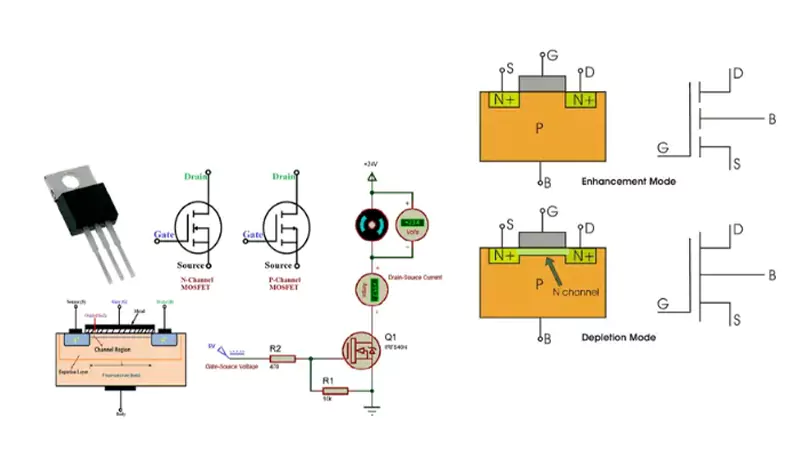
Understanding how a MOSFET works requires a basic knowledge of its structure and operation. A MOSFET consists of three main parts: the source, drain, and gate. The source is the terminal through which carriers (electrons or holes) enter the channel, the drain is where they exit, and the gate controls the channel’s conductivity.
Operation Modes: MOSFETs operate in different modes depending on the voltage applied to the gate.
- Cut-off Mode: When the gate-source voltage (V_GS) is below the threshold voltage (V_TH), the MOSFET is in the cut-off mode, and no current flows from drain to source.
- Linear (Ohmic) Mode: When V_GS is just above V_TH, the MOSFET enters the linear mode. The current flow is proportional to V_GS, and the MOSFET behaves like a variable resistor.
- Saturation Mode: When V_GS is significantly higher than V_TH, the MOSFET is in saturation mode. The current flow is at its maximum and is relatively independent of V_GS.
Types of MOSFETs: There are two main types of MOSFETs, N-channel and P-channel, each with its own characteristics and applications.
- N-channel MOSFETs: These are more common and have electrons as the charge carriers. They generally offer better performance and lower resistance than P-channel MOSFETs.
- P-channel MOSFETs: These use holes as the charge carriers and are typically used in applications where an N-channel MOSFET cannot be used.
How Does a MOSFET Transistor Work?
A MOSFET transistor works by varying the electrical conductivity of a channel between the source and drain terminals through the application of voltage to the gate terminal. Here’s a closer look at its working principle:
Channel Formation: In an N-channel MOSFET, a positive voltage applied to the gate creates an electric field that attracts electrons to the region under the gate, forming a conductive channel between the source and drain.
Current Control: The strength of the electric field (and thus the conductivity of the channel) is controlled by the gate-source voltage (V_GS). A higher V_GS enhances the channel’s conductivity, allowing more current to flow from drain to source.
Threshold Voltage: The minimum gate-source voltage required to create a conductive channel is known as the threshold voltage (V_TH). Below this voltage, the MOSFET remains in the off state.
On-State and Off-State: When V_GS is greater than V_TH, the MOSFET is in the on-state, allowing current to flow. When V_GS is less than V_TH, the MOSFET is in the off-state, blocking current flow.
How to Use a MOSFET?
Using a MOSFET in a circuit involves understanding its specifications and following proper design principles. Here are some general steps:
- Selecting the Right MOSFET: Choose a MOSFET with suitable voltage and current ratings for your application. Consider parameters such as the threshold voltage, maximum drain current, and on-resistance.
- Gate Drive Requirements: Ensure that the gate drive voltage is adequate to fully turn on the MOSFET. Insufficient gate voltage can lead to incomplete switching and increased heat dissipation.
- Heat Management: MOSFETs can generate significant heat, especially in high-power applications. Use heatsinks or cooling mechanisms to manage thermal dissipation and prevent overheating.
- Circuit Protection: Implement protection circuits such as snubber circuits or flyback diodes to safeguard the MOSFET from voltage spikes and transients.
How to Wire a MOSFET?
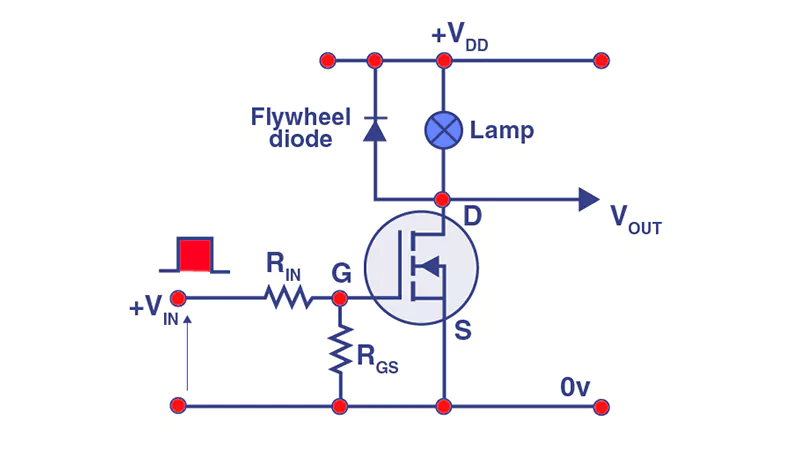
Wiring a MOSFET correctly is crucial for its proper operation. Here’s a basic guide on how to wire a MOSFET:
- Identify the Terminals: Determine the source, drain, and gate terminals of the MOSFET. This information is usually available in the datasheet.
- Connect the Source: Connect the source terminal to the ground or the negative side of the power supply for N-channel MOSFETs, or to the positive side for P-channel MOSFETs.
- Connect the Drain: Connect the drain terminal to the load. For N-channel MOSFETs, the drain is connected to the positive side of the power supply, and for P-channel MOSFETs, it is connected to the ground or negative side.
- Connect the Gate: The gate terminal is connected to the control voltage. Ensure that the gate drive voltage is within the specified range to fully turn on the MOSFET.
- Add a Gate Resistor: To limit the inrush current and prevent damage, place a resistor (typically 10-100 ohms) in series with the gate.
- Gate-Source Resistor: Include a resistor (10k ohms) between the gate and source to ensure that the MOSFET turns off completely when the gate drive voltage is removed.
Conclusion
MOSFETs are versatile and essential components in modern electronics, serving as efficient switches and amplifiers. They offer significant benefits in power regulation, signal amplification, and circuit protection.
Understanding their operation, selecting the right MOSFET for your application, and correctly wiring them are crucial for maximizing their performance and longevity.
Whether you are designing complex digital circuits or simple power control systems, mastering the use of MOSFETs will greatly enhance your electronic projects.
